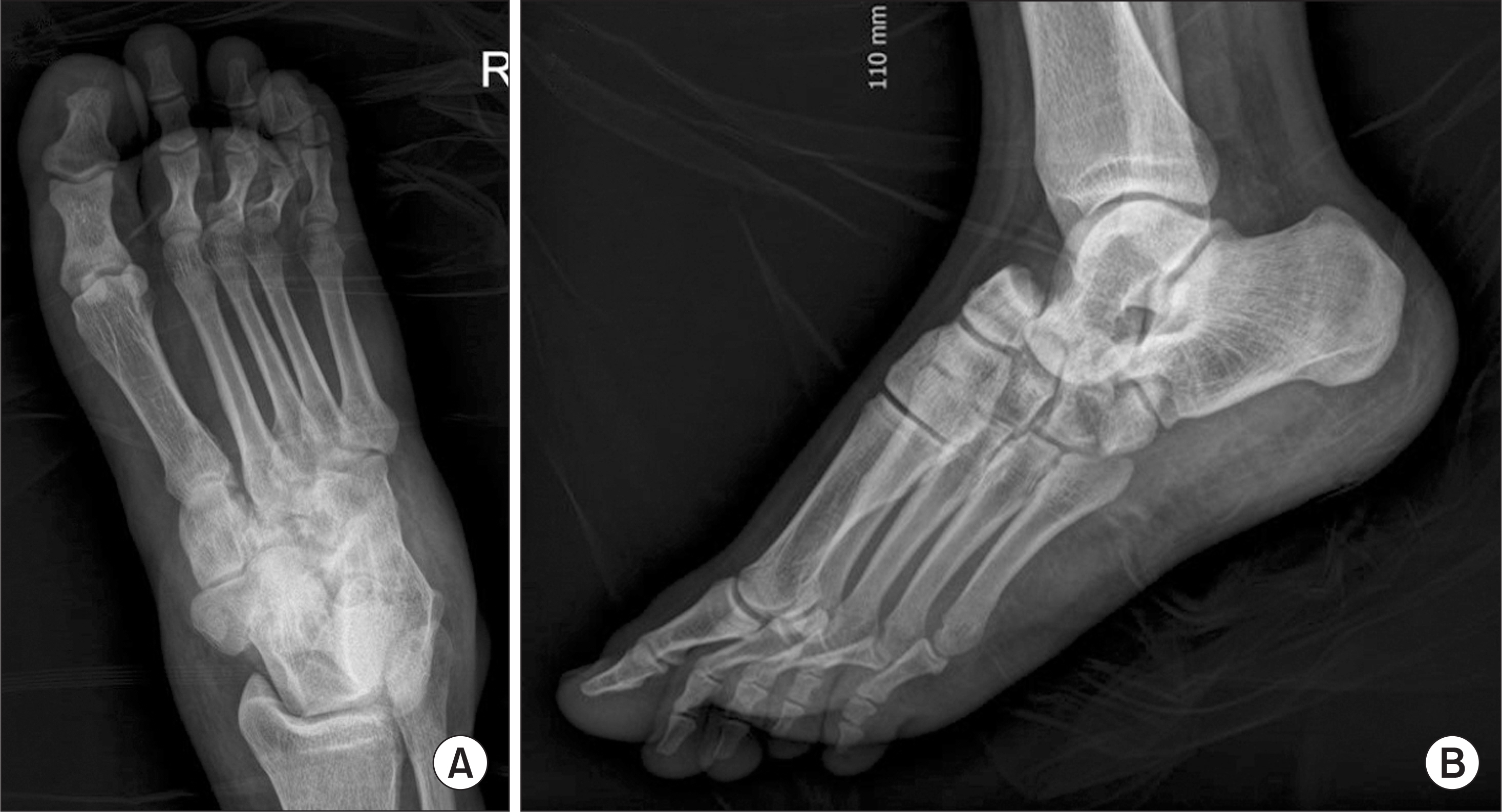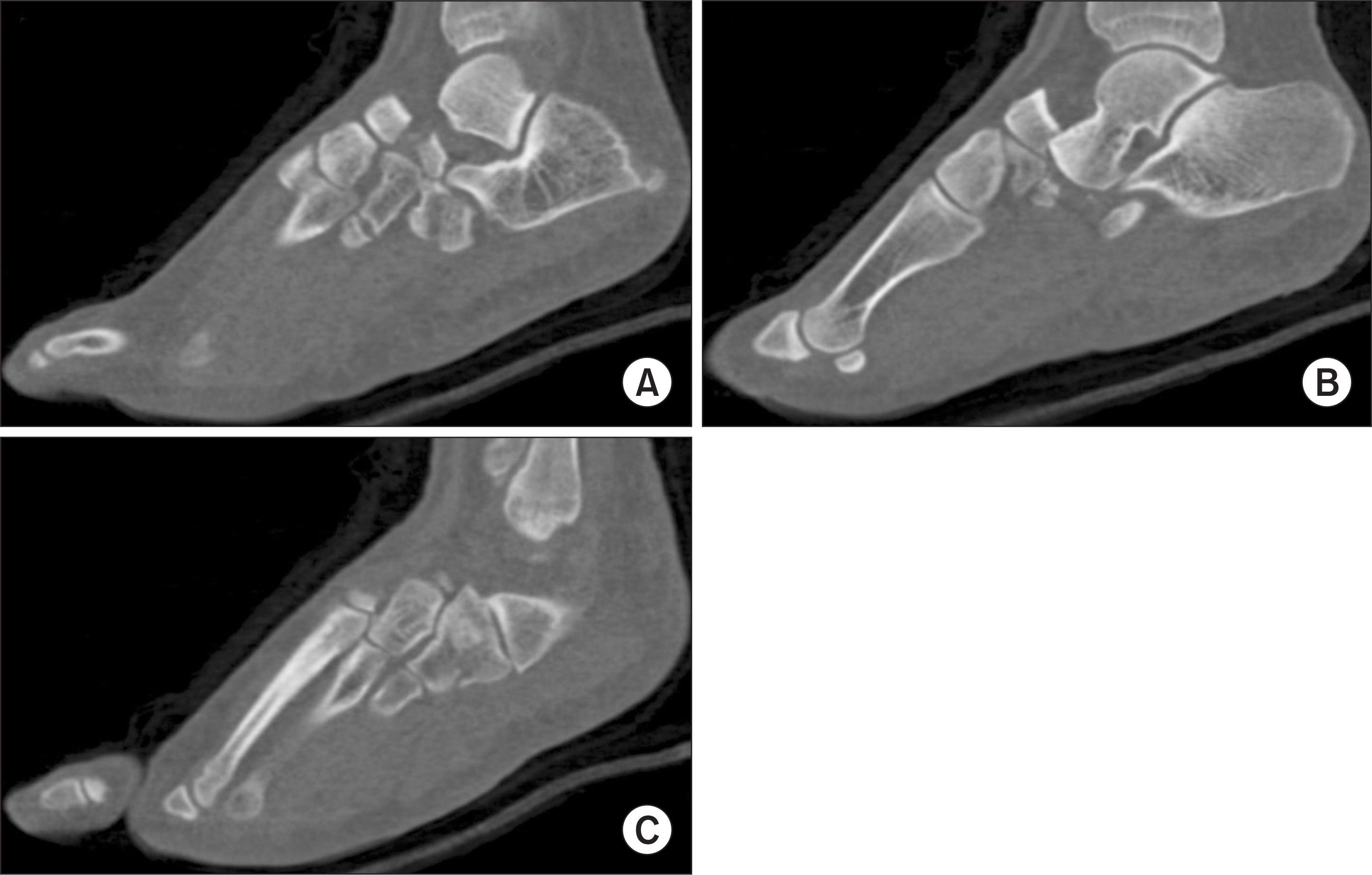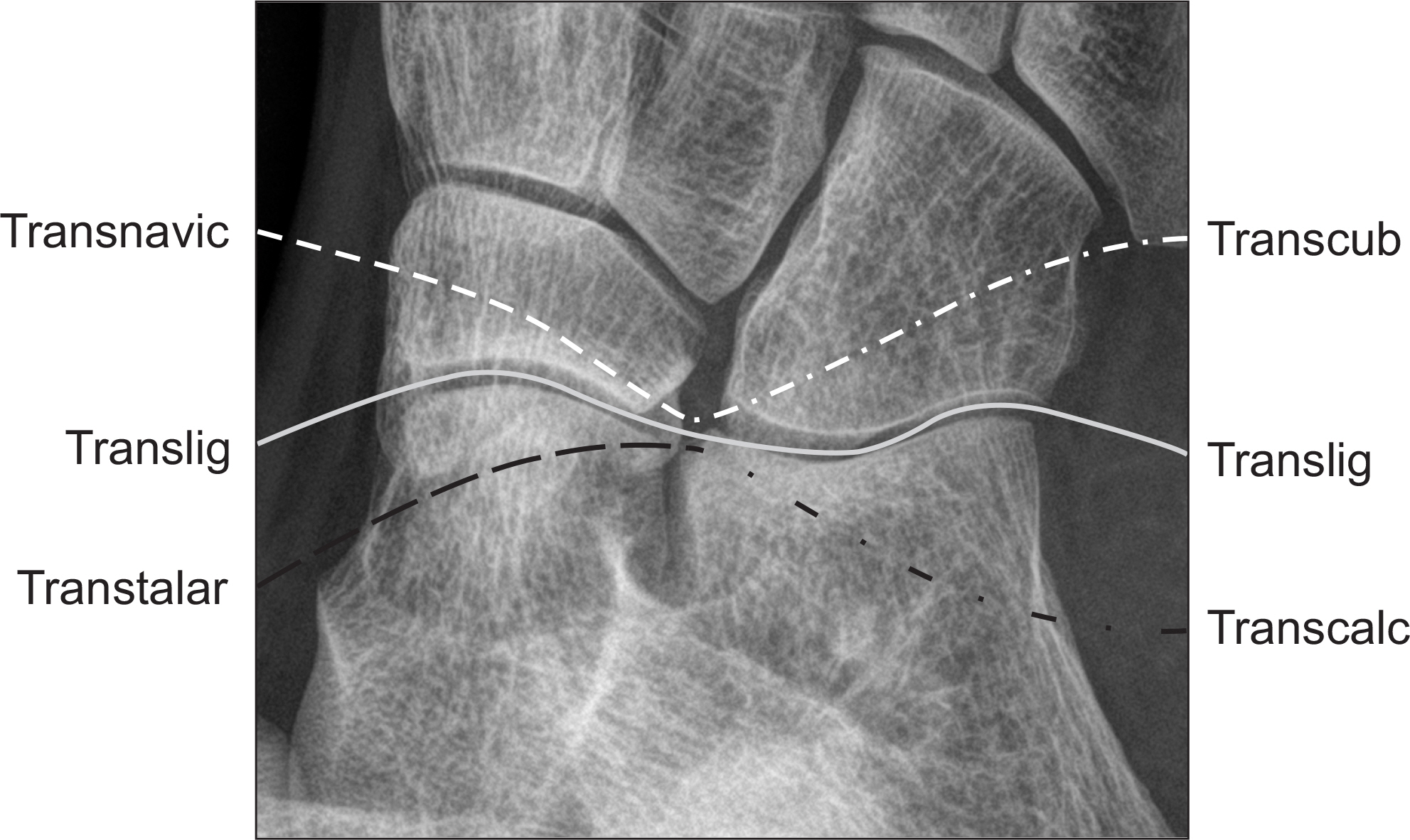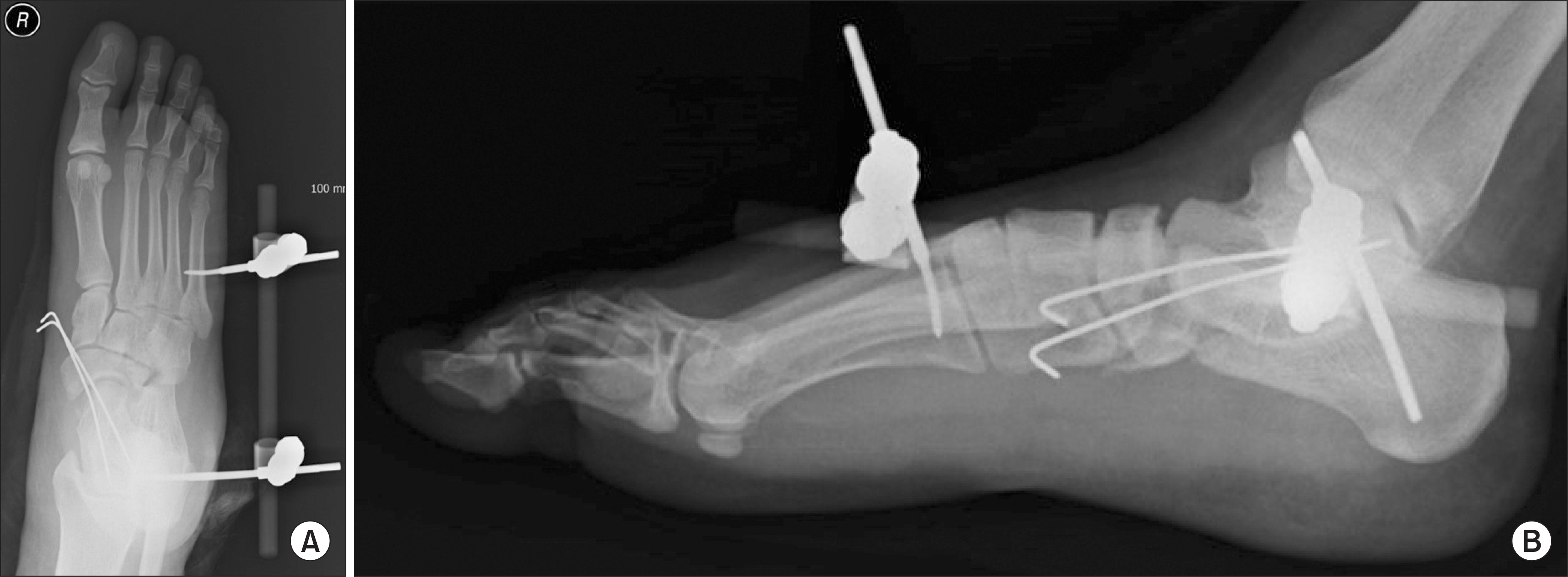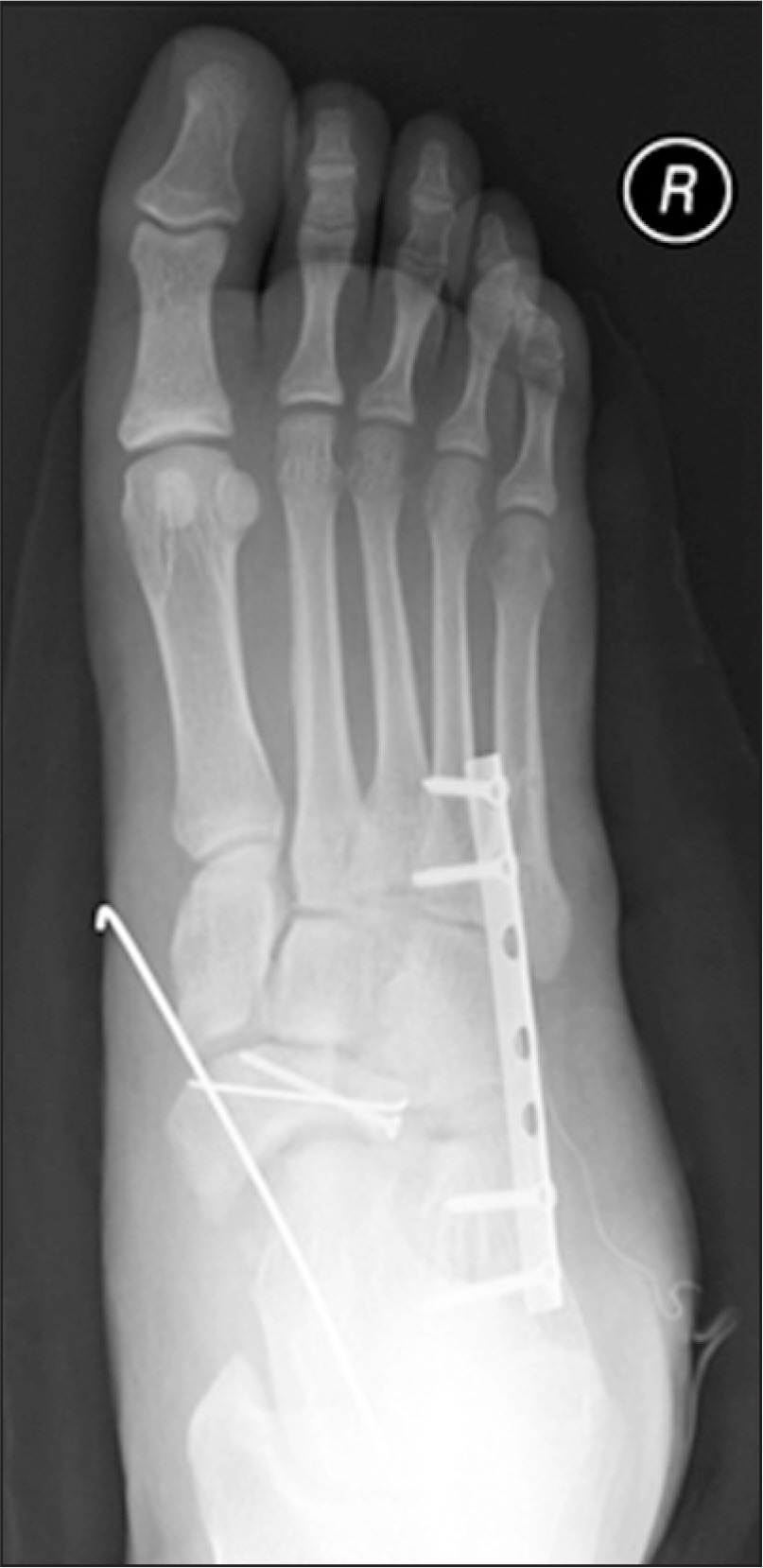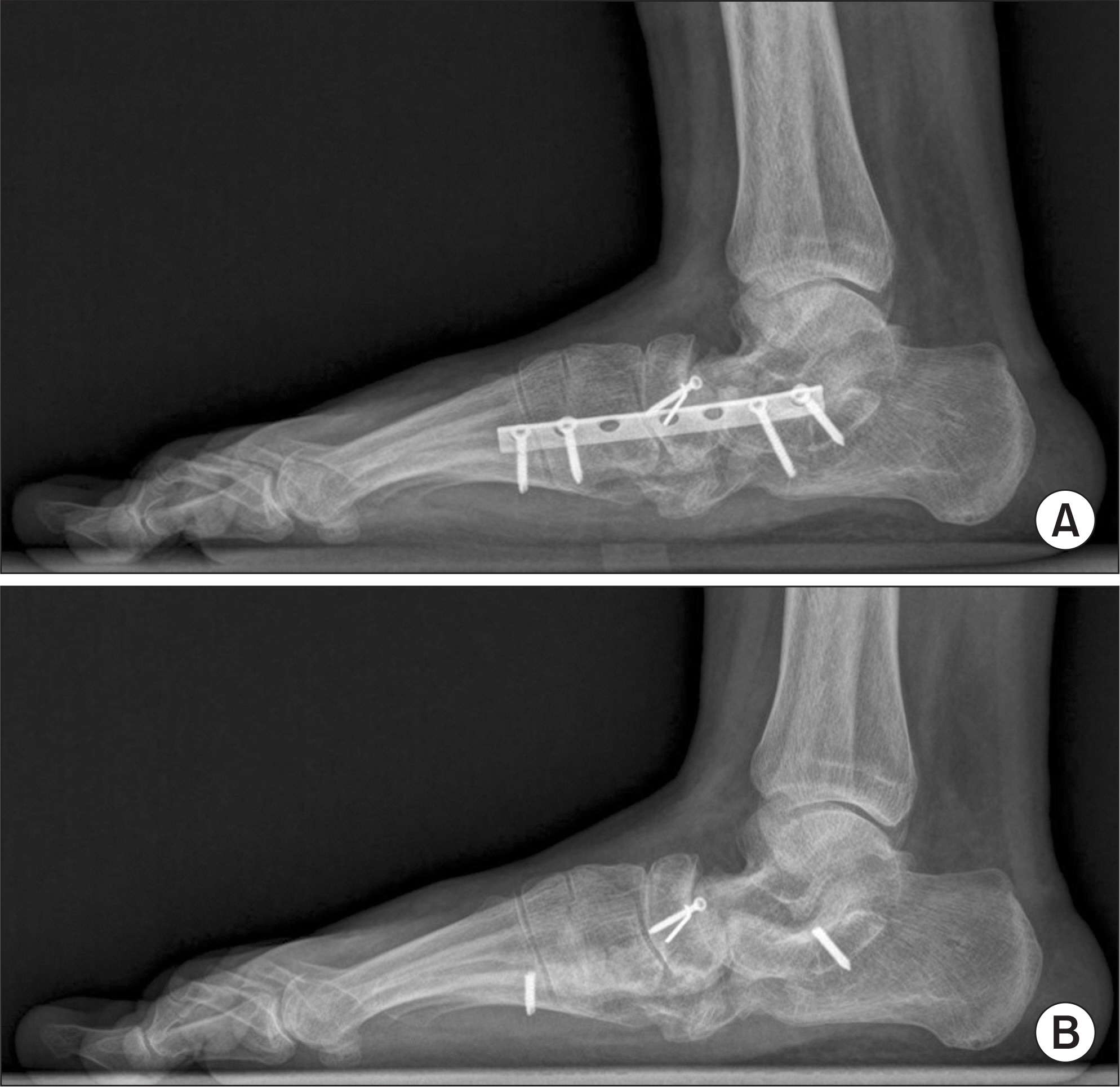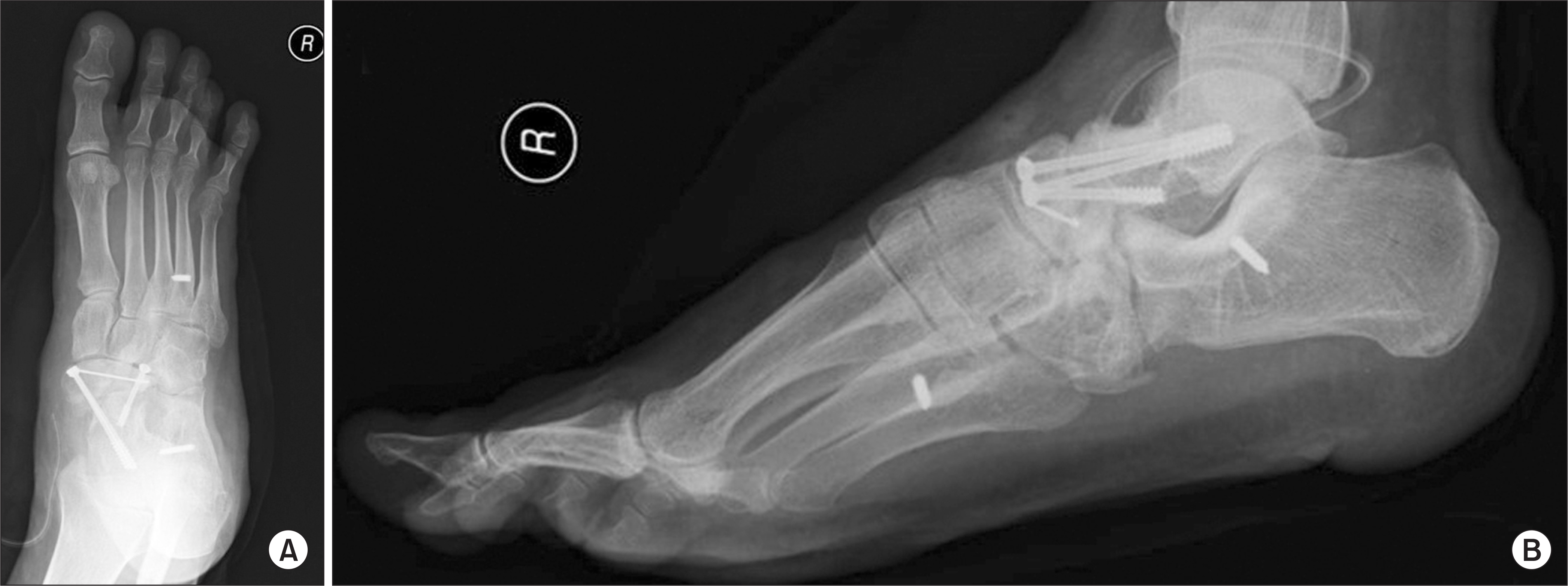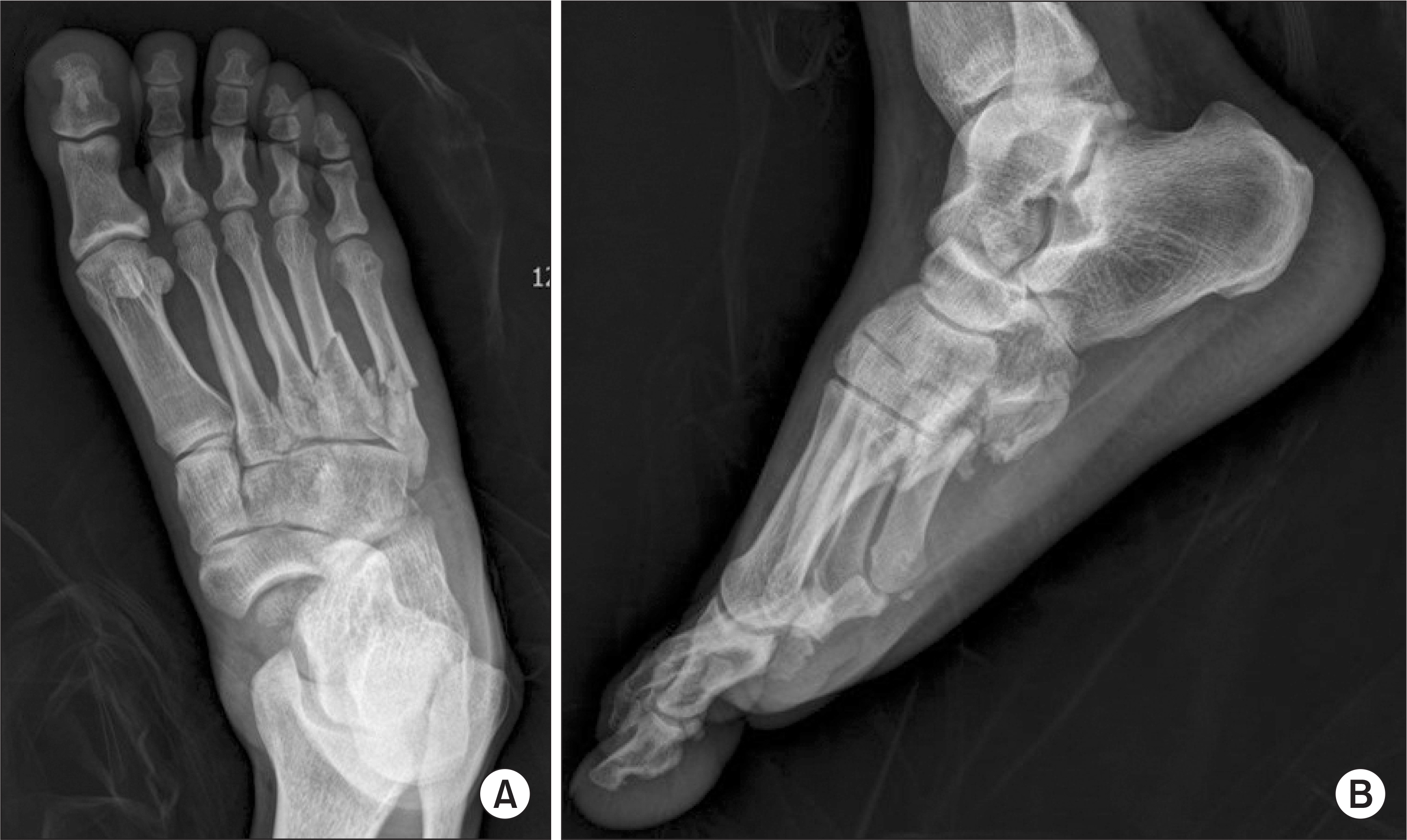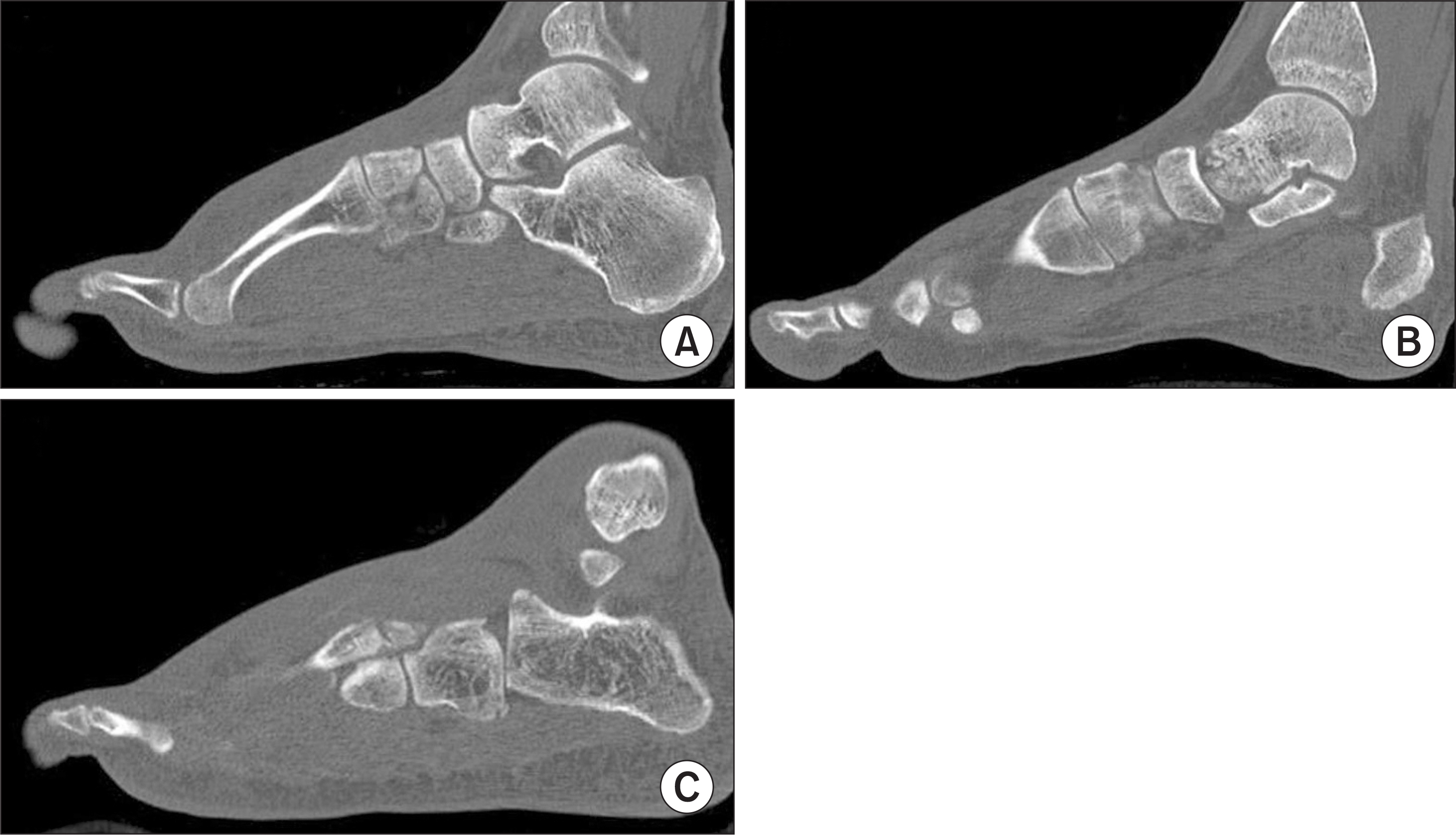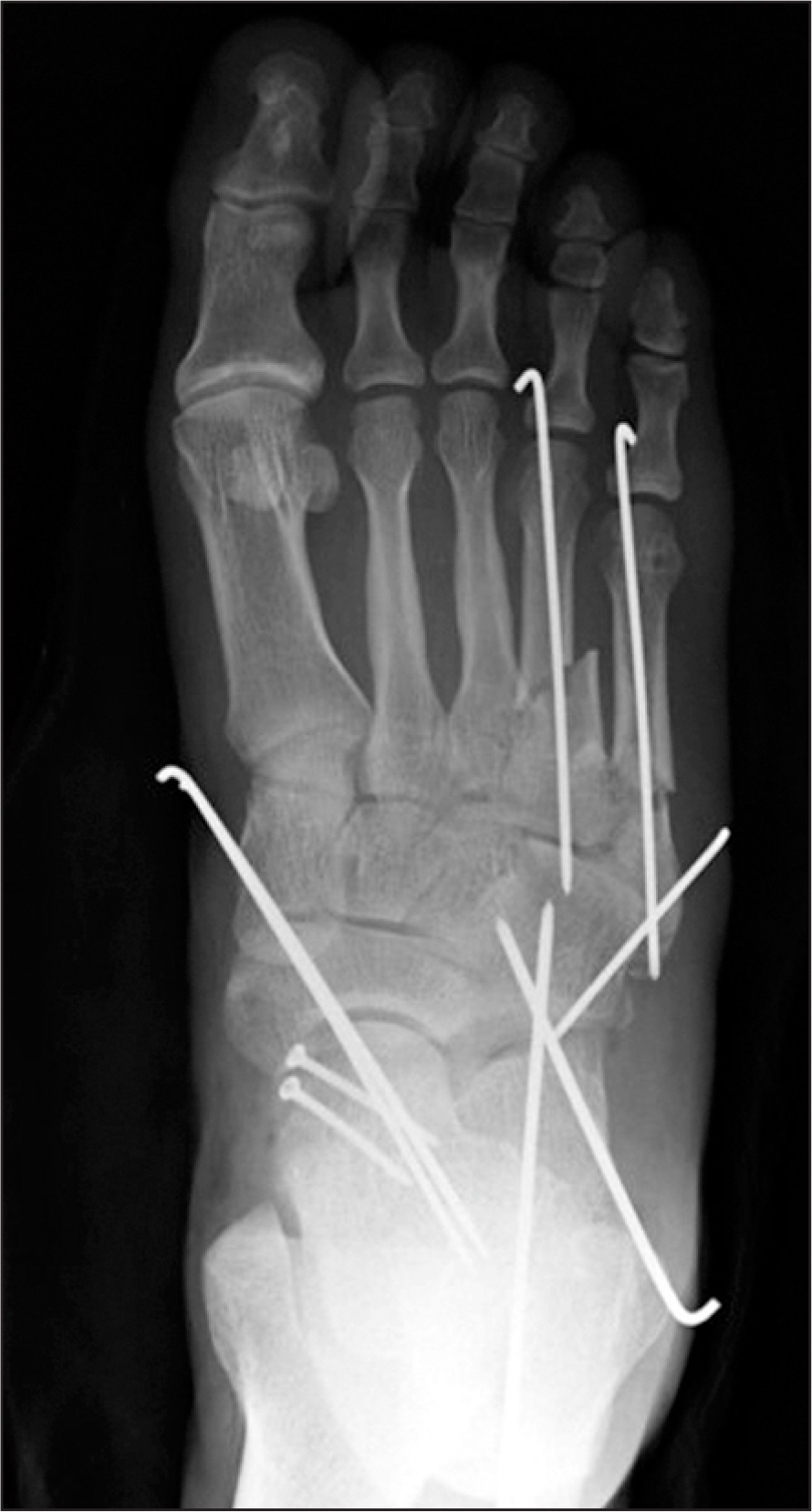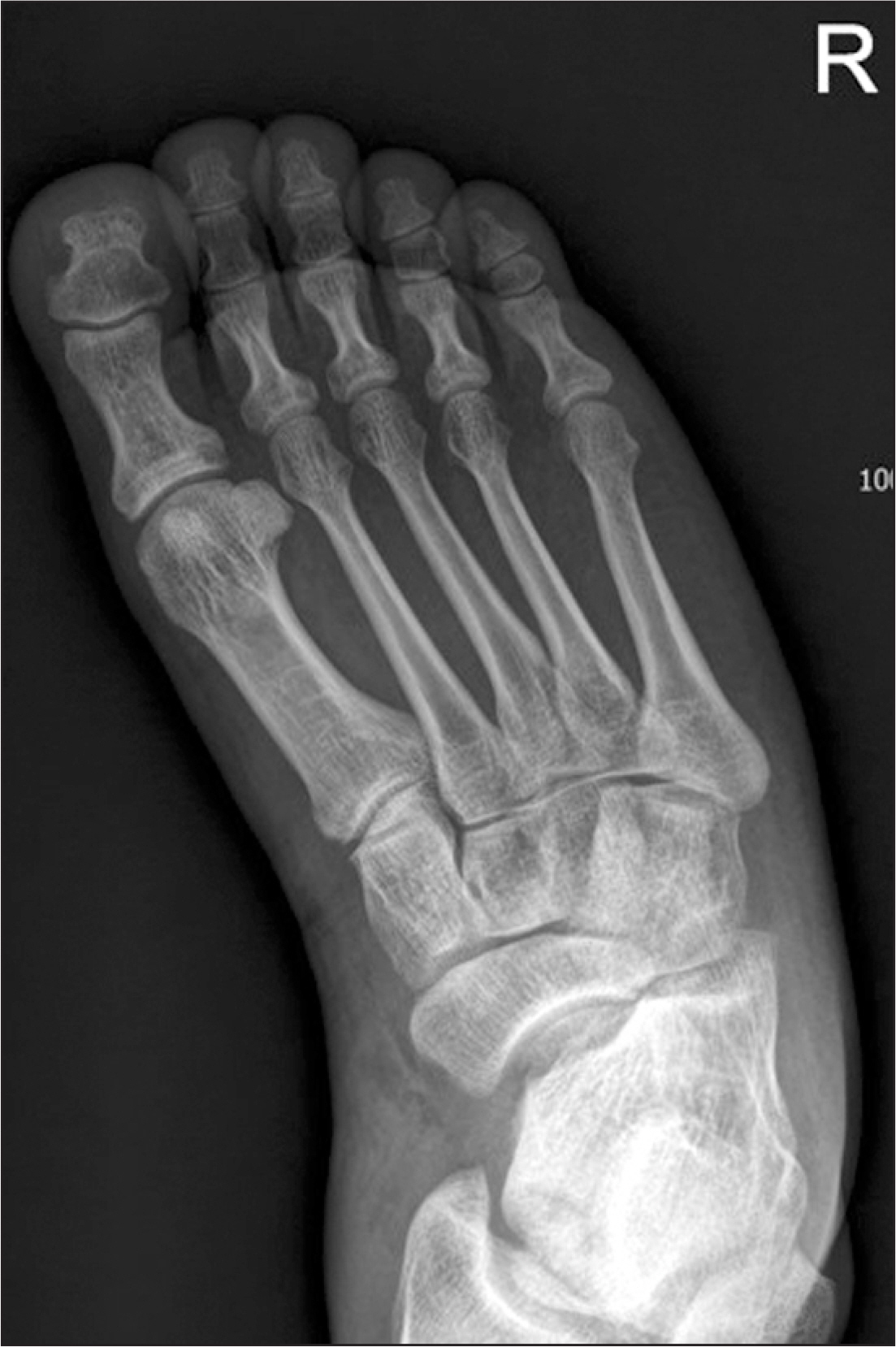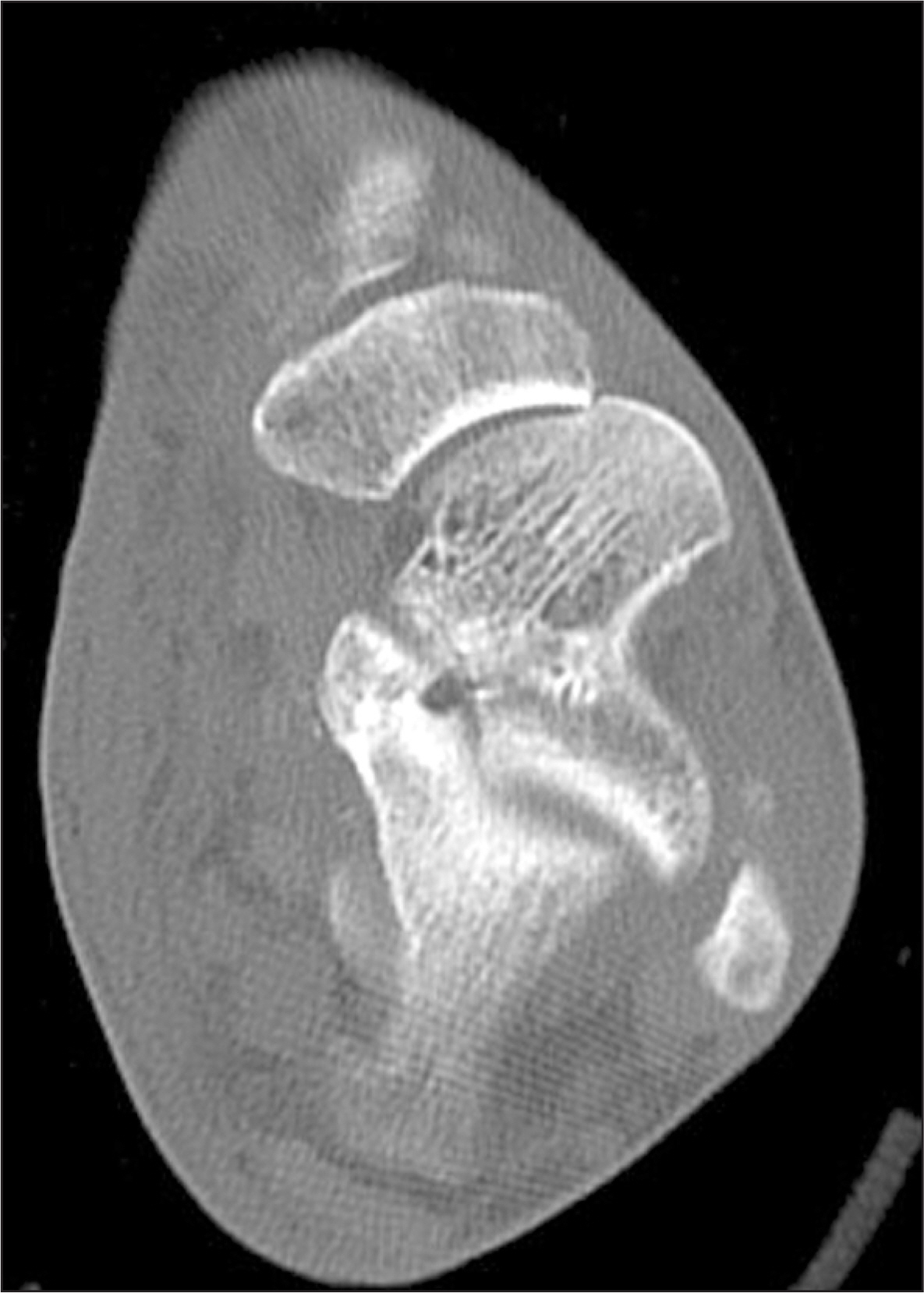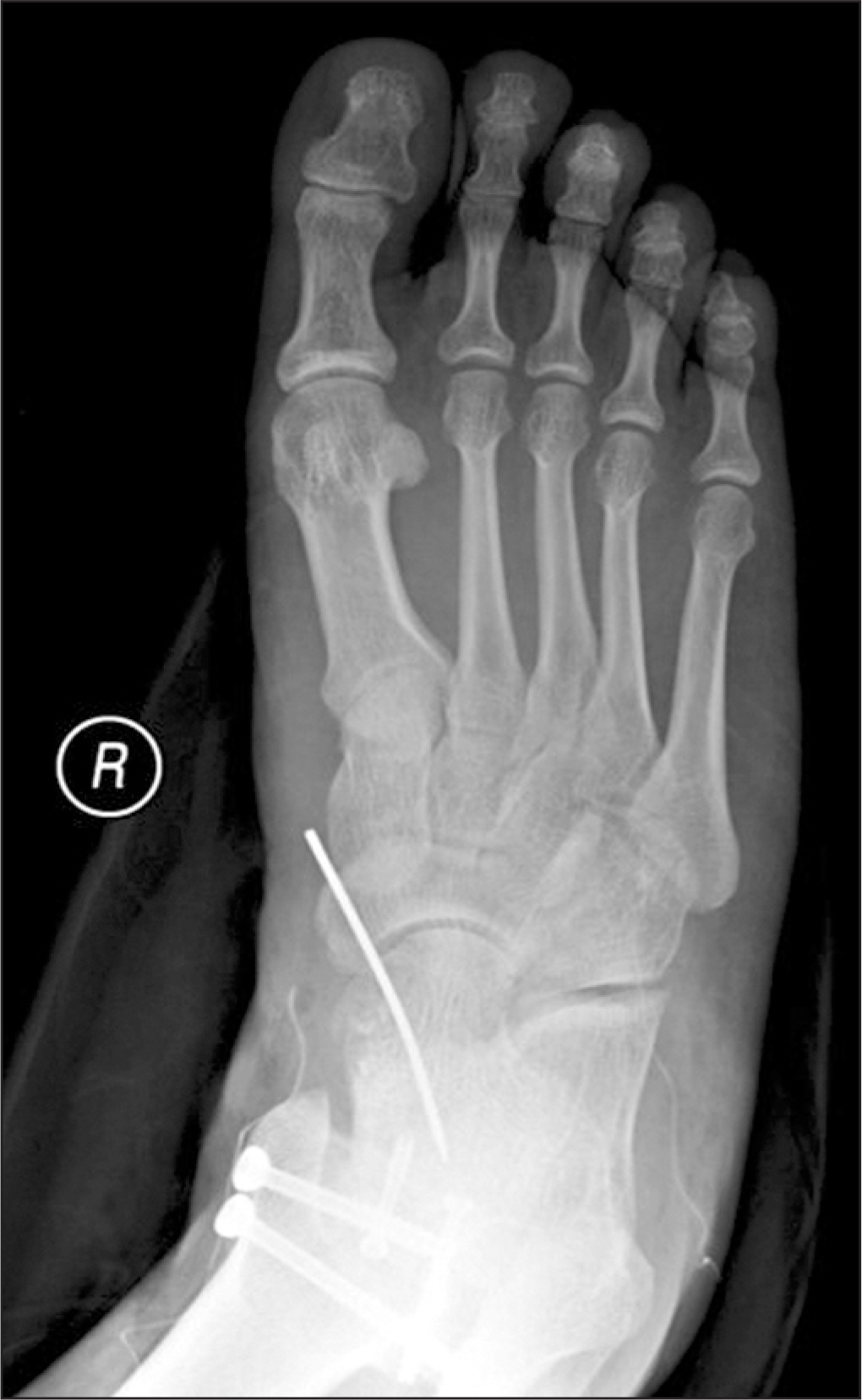J Korean Foot Ankle Soc.
2018 Sep;22(3):120-126. 10.14193/jkfas.2018.22.3.120.
Chopart Joint Fracture and Dislocation: A Report of Three Cases
- Affiliations
-
- 1Department of Orthopedic Surgery, Dankook University College of Medicine, Cheonan, Korea. m3artist@hanmail.net
- KMID: 2428670
- DOI: http://doi.org/10.14193/jkfas.2018.22.3.120
Abstract
- Chopart joint fracture and dislocation are rare injuries compared with other joint injuries with various clinical manifestations. Moreover, there is a lack of knowledge of the radiological findings of the joints, and thus, the extent of joint ligament damage may be underestimated, leading to improper treatment. This paper reports three cases of Chopart joint injury and seeks to reconsider the importance of Chopart joint evaluation and treatment.
Figure
Reference
-
References
1. Wolf JH. François Chopart (1743–1795): inventor of the partial foot amputation at the tarsometatarsal articulation. Orthop Traumatol. 2000; 8:314–7.2. Rammelt S, Schepers T. Chopart injuries: when to fix and when to fuse? Foot Ankle Clin. 2017; 22:163–80.3. Rammelt S, Grass R, Schikore H, Zwipp H. [Injuries of the Chopart joint]. Unfallchirurg. 2002; 105:371–83. ; quiz 384–5. German.4. Schneiders W, Rammelt S. Joint-sparing corrections of malunited Chopart joint injuries. Foot Ankle Clin. 2016; 21:147–60.
Article5. Kutaish H, Stern R, Drittenbass L, Assal M. Injuries to the Chopart joint complex: a current review. Eur J Orthop Surg Traumatol. 2017; 27:425–31.
Article6. Astion DJ, Deland JT, Otis JC, Kenneally S. Motion of the hindfoot after simulated arthrodesis. J Bone Joint Surg Am. 1997; 79:241–6.
Article7. Zwipp H. Chirurgie des fusses. Wien: Springer-Verlag;1994.8. Richter M, Thermann H, Huefner T, Schmidt U, Goesling T, Krettek C. Chopart joint fracture-dislocation: initial open reduction provides better outcome than closed reduction. Foot Ankle Int. 2004; 25:340–8.
Article9. Kotter A, Wieberneit J, Braun W, Rüter A. [The Chopart dislocation. A frequently underestimated injury and its sequelae. A clinical study]. Unfallchirurg. 1997; 100:737–41. German.10. Rammelt S, Marti RK, Zwipp H. [Arthrodesis of the talonavicular joint]. Orthopade. 2006; 35:428–34. German.
- Full Text Links
- Actions
-
Cited
- CITED
-
- Close
- Share
- Similar articles
-
- Chorpart's Dislocation: A Case Report
- Fracture and Dislocation of the Midtarsal Joint: A Case Report
- Dislocation of Fifth Carpornetacarpal Joint: Two Cases Report
- Fracture Dislocation of the interphalangeal Joint of Great Toe: Report of Three Cases
- Clavicle Midshaft Fracture with Acromioclavicular Joint Dislocation: A Case Report

